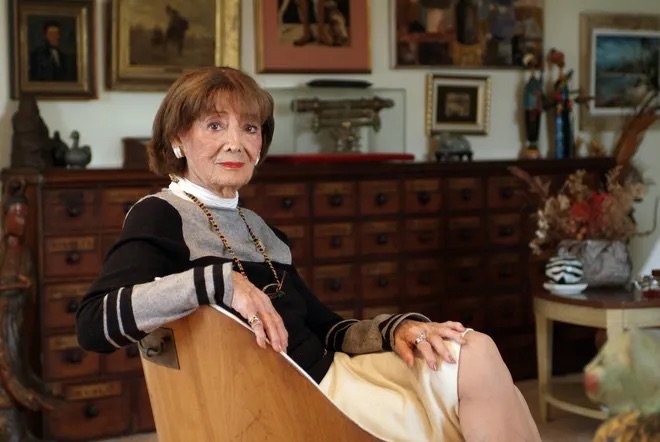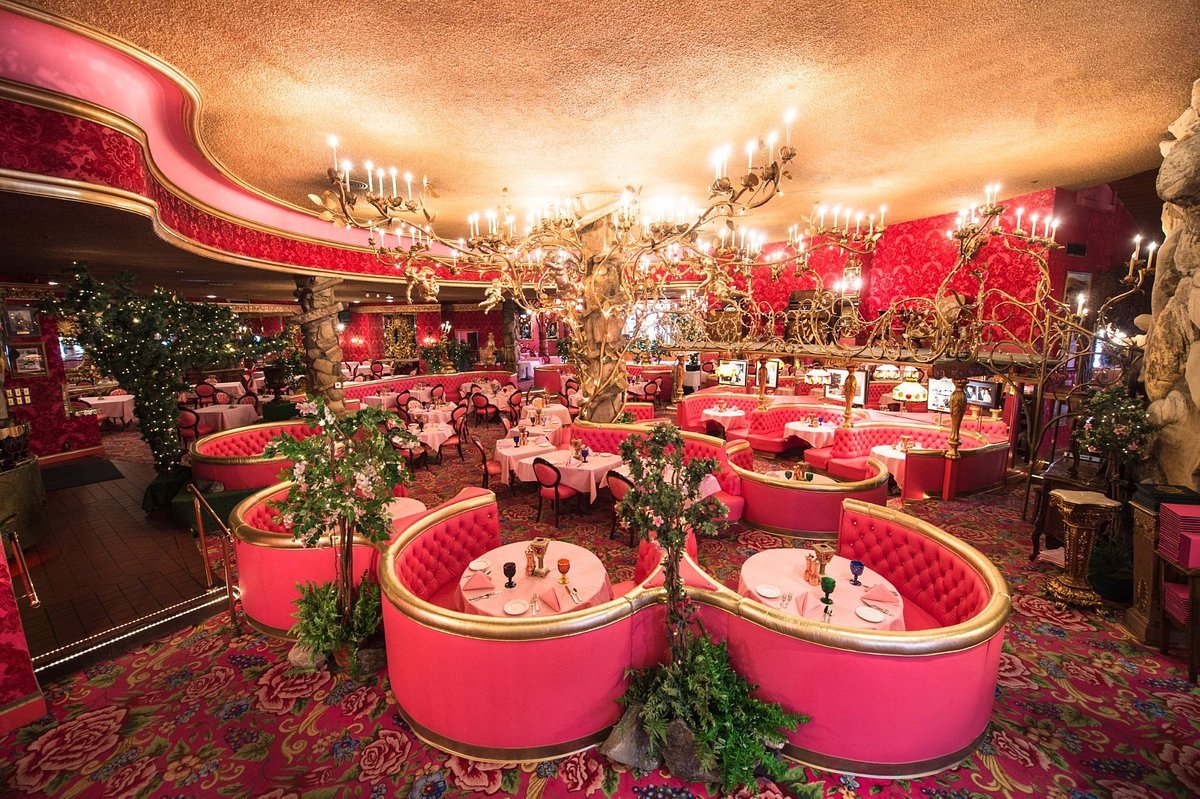The Mid-Century Magic of Ruth Richmond in Sarasota
Sarasota, Florida, is renowned for its stunning mid-century modern architecture, and among the luminaries of this design movement stands the remarkable Ruth Richmond. Richmond was a visionary architect who left an indelible mark on Sarasota's architectural landscape during the mid-20th century. Her iconic designs and innovative approach continue to inspire and influence the world of modern aesthetics.
The Mid-Century Maven: Ruth Richmond
Ruth Richmond was born on October 11, 1914, in the bustling city of New York. Growing up in the heart of Manhattan, she was surrounded by the vibrancy and energy of one of the world's most dynamic cities. New York's rich cultural tapestry and architectural diversity would have a profound impact on her design sensibilities.
Early Years: Nurturing Creativity
Ruth Richmond's early years were marked by a deep sense of curiosity and a natural flair for creativity. She exhibited a keen interest in the arts from a young age, often sketching and crafting her own creations. This innate talent caught the attention of her family, who encouraged her to pursue her artistic inclinations.
As a teenager, Richmond enrolled in art and design classes, where her passion for furniture and interior design began to blossom. It was during these formative years that she honed her skills and developed a deep appreciation for craftsmanship and aesthetics.
Educational Journey: Shaping the Designer
Ruth Richmond's educational journey played a pivotal role in her development as a designer. She attended prestigious art schools and design institutes in New York, where she was exposed to a wide range of design philosophies and styles. Her studies deepened her understanding of design principles and fueled her desire to push the boundaries of conventional aesthetics.
Richmond's exposure to Modernist movements and Bauhaus principles during her education greatly influenced her design philosophy. She was drawn to the idea of marrying form and function, a hallmark of Mid-Century Modern design. Her experiences in the city that never sleeps, combined with her formal education, provided the perfect foundation for her future career.
The Origination of “Lanai”
Ruth Richmond, is credited with coining the term "lanai" in the context of American architecture and interior design. In the 1950s, while working on residential projects in Florida and Hawaii, Richmond introduced the term to describe a covered, open-sided porch or veranda often used for outdoor living. Her innovative use of the word "lanai" reflected the growing fascination with tropical and outdoor-oriented living spaces during the mid-century era. Today, the term is widely used to describe similar outdoor areas, showcasing Richmond's enduring influence on architectural and design vocabulary.
Ruth Richmond and Jacqueline Kennedy
Ruth Richmond and Jacqueline Kennedy, two influential women from the mid-20th century, may not have shared the same profession, but their impact on style and design resonated with many.
Ruth Richmond, an accomplished mid-century modern architect and designer, was known for her innovative approach to residential design. She popularized the concept of the "lanai," an open, covered outdoor space, which became synonymous with the relaxed, tropical lifestyle of Florida and Hawaii during the 1950s. Her designs often featured open floor plans, large windows, and a seamless connection between indoor and outdoor living. Richmond's work embodied the mid-century modern ethos of simplicity, functionality, and harmony with nature.
On the other hand, Jacqueline Kennedy, as the First Lady of the United States from 1961 to 1963, had a profound influence on fashion and interior design during the early 1960s. Her impeccable sense of style, characterized by tailored clothing, elegant accessories, and a preference for clean lines, helped define the fashion trends of the era. This influence extended to interior design, as the White House underwent a significant restoration and redecoration during her tenure.
While Ruth Richmond and Jacqueline Kennedy operated in different spheres, they both left an indelible mark on the mid-century design landscape. Richmond's architectural innovations and Kennedy's style sensibilities continue to inspire designers and enthusiasts alike, showcasing the enduring appeal of mid-20th-century aesthetics.
The Status of Women in Florida | Governor's Commission on the Status of Women 1973
In 1973, Ruth Richmond's contribution to architecture and design was duly recognized in "The Status of Women in Florida; an Annual Report" by the Florida Governor's Commission on the Status of Women. This acknowledgment reflected her significant impact on the architectural landscape and the broader field of design, highlighting her role as a trailblazing woman in a predominantly male-dominated profession.
Ruth Richmond's inclusion in this report served as a testament to her pioneering spirit and innovative approach to architecture, particularly within the context of mid-century modern design. Her work, often characterized by open spaces, integration with nature, and the popularization of the "lanai" concept, contributed to shaping residential design in Florida and beyond.
Being featured in a report focused on the status of women in Florida underscored not only Richmond's professional achievements but also her role as an inspiration for aspiring women architects and designers. It highlighted the importance of recognizing and celebrating women's accomplishments in fields traditionally dominated by men.
Richmond's legacy continues to influence the world of architecture and design, serving as a reminder that gender should never be a barrier to pursuing one's passions and making a lasting impact in any profession. Her recognition in this report was a significant step towards acknowledging and promoting gender diversity in the fields of architecture and design.
Designing the Dream: Richmond's Architectural Vision
When we think of Mid-Century Modern design, iconic furniture pieces and interior aesthetics often come to mind. However, the influence of architects on this design movement is equally significant. One such visionary architect who made an indelible mark on Mid-Century Modern design is Ruth Richmond. Let's delve into her architectural vision and how it shaped the landscape of MCM design.
Architectural Pioneering
Ruth Richmond's architectural journey was marked by her pioneering spirit and innovative ideas. She believed that architecture should seamlessly blend with nature while promoting the concept of functional minimalism. Her designs embraced open spaces, large windows that invited natural light, and an integration of outdoor and indoor living areas – all hallmarks of Mid-Century Modern architecture.
The Connection with Nature
Richmond's architectural vision emphasized a deep connection with nature. Her designs often featured extensive use of glass, allowing residents to feel immersed in their natural surroundings. She believed that the harmony between the built environment and nature was essential for a truly exceptional living experience.
Functionality Meets Aesthetics
A key principle of Mid-Century Modern design is the fusion of functionality and aesthetics. Ruth Richmond's architectural creations embodied this principle. Her homes were designed to be highly functional, with efficient use of space and innovative storage solutions. Simultaneously, they exuded an unparalleled sense of elegance and style, showcasing her keen eye for aesthetics.
Influence on Interior Design
Ruth Richmond's architectural designs had a profound impact on interior design. Her open floor plans and emphasis on clean lines seamlessly extended into the interiors. These architectural elements provided interior designers with a canvas on which to create MCM-inspired living spaces. Her homes often featured iconic MCM furniture pieces, further cementing the connection between architecture and interior design.
Iconic Creations: Ruth Richmond's Legacy
Ruth Richmond's foray into MCM design began with furniture. Her pieces encapsulate the core principles of the movement: functionality, simplicity, and a harmonious connection with nature. Her iconic creations often featured clean lines, organic forms, and the use of natural materials. Pieces like her coffee tables, chairs, and credenzas remain highly sought-after by collectors and enthusiasts alike.
Architectural Visionary
Beyond furniture, Ruth Richmond's architectural designs reshaped the MCM landscape. Her homes were a testament to the movement's emphasis on open spaces, large windows, and a seamless integration with the natural environment. Richmond's architectural vision emphasized the importance of living spaces that celebrated the beauty of the outdoors, creating a sense of harmony and tranquility.
The Marriage of Form and Function
One of the defining characteristics of Ruth Richmond's work was her ability to marry form and function seamlessly. Her furniture pieces were not merely aesthetic; they were designed to enhance everyday living. Her architectural designs, too, prioritized functionality, with efficient use of space and innovative storage solutions that anticipated the needs of residents.
Today, Sarasota remains a hub of mid-century modern architecture, thanks in no small part to the groundbreaking work of visionaries like Ruth Richmond. Her legacy lives on not only in the structures she designed but also in the broader architectural community that she helped shape.
Exploring Ruth Richmond's Sarasota Today
For those eager to immerse themselves in the architectural wonders of Ruth Richmond, a visit to Sarasota offers a unique opportunity to explore her enduring legacy. Her iconic designs still grace the city's neighborhoods, providing a tangible connection to her visionary work.
Whether you're an architecture enthusiast, a homeowner seeking inspiration, or a design lover, Ruth Richmond's Sarasota offers a captivating journey through the mid-century modern movement. Her innovative spirit continues to inspire, reminding us that architecture is not merely about structures but about creating spaces that resonate with the soul.
Ruth Richmond was not only an accomplished designer but also a pioneer of MCM in Sarasota. Her architectural vision transformed the cityscape, introducing MCM principles that emphasized clean lines, open spaces, and a seamless connection between indoor and outdoor living.
Sarasota School of Architecture
Ruth Richmond's influence is deeply intertwined with the Sarasota School of Architecture, a movement that sought to create a unique regional form of Modernist architecture. Her work, along with that of other prominent architects, contributed to the distinctive MCM character of the city.
The connection between the Sarasota School of Architecture and Ruth Richmond's interior designs was not a mere coincidence. Architects and interior designers of the era often collaborated closely to ensure a seamless integration of their respective disciplines. This synergy resulted in homes that were not only architecturally stunning but also thoughtfully furnished, creating a holistic living experience.
For example, in the iconic Hiss Studio designed by Paul Rudolph, Richmond's interior design choices complemented the structure's bold architectural elements. Natural materials, such as wood and stone, were used to soften the sleek concrete surfaces. Furnishings were carefully selected to enhance both comfort and aesthetics, transforming the studio into a functional work of art.
Ruth Richmond's Architectural Legacy
As one of the pioneering interior designers of the mid-20th century, Richmond's work left an indelible mark on the world of architecture and decor. Today, enthusiasts and homeowners alike are captivated by well-preserved Ruth Richmond-designed homes and the enduring design elements that define her legacy.
Ruth Richmond was a trailblazing figure in mid-century modern interior design. Her approach to creating functional yet aesthetically pleasing spaces was revolutionary for its time and remains influential today. Richmond's design philosophy emphasized the use of natural materials, open floor plans, and a seamless integration of indoor and outdoor spaces—a hallmark of mid-century modern design.
The Florida Connection
Richmond's work was deeply rooted in the Florida lifestyle, where she lived and practiced her craft. Her designs were a direct response to the state's climate and natural surroundings. Large windows, sliding glass doors, and expansive Florida rooms were recurring elements in her work. These design choices aimed to bring the outdoors in, blurring the lines between interior and exterior spaces.
Well-Preserved Ruth Richmond-Designed Homes
The preservation of Ruth Richmond's designed homes has become a mission for design enthusiasts and architectural preservationists. These homes represent a time capsule of mid-century modern aesthetics, offering a glimpse into an era where form and function coalesced effortlessly.
One such example is the iconic "Hiss Studio" in Sarasota, Florida, designed by architect Paul Rudolph with interior design by Ruth Richmond. This well-preserved gem showcases the collaborative genius of the two visionaries. The studio's striking architectural features, including its cantilevered design and innovative use of concrete, are perfectly complemented by Richmond's choice of furnishings and decor. It's a prime example of the seamless integration of architecture and interior design that defines the era.
Sarasota's MCM Renaissance
In recent years, there has been a resurgence of interest in MCM design, both in Sarasota and globally. Sarasota's commitment to preserving its MCM heritage, combined with Ruth Richmond's legacy, has played a significant role in this revival. The city has become a hub for MCM enthusiasts seeking to explore its architectural and design treasures.
Ruth Richmond's profound impact on Sarasota's mid-century modern architecture is a testament to her visionary talent and unwavering dedication to design excellence. Her creations have stood the test of time and played a pivotal role in shaping Sarasota's architectural identity.
As we explore her architectural legacy, we are reminded of the power of design to transcend eras and leave an indelible mark on the world. Ruth Richmond's Sarasota remains a captivating chapter in the history of mid-century modern architecture—one that continues to inspire and ignite our appreciation for the beauty of thoughtful design.
About the Authors
Jamie and Lyle, MCM enthusiasts at Plaidsmith.com, offer hands-on experience and expert insights into mid-century modern design. They curate authentic pieces, share historical context, and guide clients to make informed choices. Their expertise spans iconic designers, restoration techniques, and trends. Trusted authorities in the field continually expand their knowledge to stay at the forefront of MCM. Beyond work, they explore auctions, learn restoration techniques, and enjoy vintage catalogs, embodying their passion for mid-century modern design.







